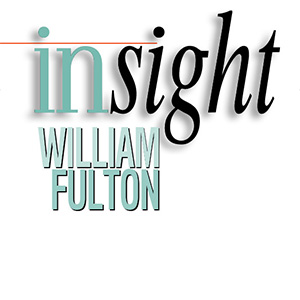This blog is brought to you free of charge courtesy of the paying subscribers to California Planning & Development Report. To become a paying subscriber with access to all of our content, just click here.
The mascot of Pacific Palisades High School is the Dolphin, which, unlike most mascots, is nonfictional. Pods of bottlenose frequently accompany morning swims, games of beach volleyball, and sunset strolls just down the hill from campus. That's how idyllic this place is. Or was.
An estimated 30 percent of Palisades High’s buildings are now ash. Thousands of homes and businesses were far less lucky.
Though the Palisades feels like a world apart from Los Angeles, it is—unbeknownst to some residents—not its own city but rather a neighborhood unto Los Angeles. It's suburban, but it's not a suburb. Over 100 years ago, it was founded by Methodists looking for a pleasant escape far from the urban core. It was meant to be a happy (and, incidentally, alcohol-free) community. Its primary social club was named, cheerily, the Uplifters. Even over the span of four generations, that intentional spirit of neighborliness persisted. The Palisades was a place where people enjoyed living -- even, and especially, in contrast to other wealthy Los Angeles communities that trade on seclusion.
The Palisades did not lack for flaws. To state the obvious, it was expensive, and it was not remotely as diverse as the city it inhabits. But it was a fundamentally decent place.
I know firsthand: I lived there for a few years when I was in elementary school, and I have hung out there regularly ever since. Today, I live in Brentwood, just east of the Palisades. From the top floor of my building, I watched flames gnaw away at the hills to the west, not knowing which of my friends’ homes had been consumed. I’ve been on evacuation watch for days.
I use the past tense deliberately. As everyone now knows, the Palisades is, essentially, no more.
(Altadena, an unincorporated community at the foot of the perennially flammable San Gabriel Mountains, was similarly beloved by its residents and similarly devastated by a separate fire. I've never been there, and I'm sad. I'll never get to go to Fox's bar or the Bunny Museum.)
Last Tuesday, the Palisades Fire erupted as quickly as the planning process is slow, progressing from spark to cataclysm in less time than it takes to read the introduction to an environmental impact report. As developer and former L.A. Police Commission Steve Soboroff told the Los Angeles Times, the Santa Ana winds were so fierce and chaotic, “this isn’t just a fire.... this is like a thousand fires."
Within 24 hours, the Palisades fell victim to the same combination of human-made and natural forces that devastated Paradise, Santa Rosa, the Berkeley Hills, Redding, and too many other California communities, both urban and rural.
Much of the national discussion has focused on preparedness (including sniping about fire hydrants and ugly talk about the L.A. Fire Department’s hiring policies by people who wouldn't know California from Mars). I don't know if any preparation could have prevented the ravagement brought by winds over 80 miles per hour and brush unquenched for eight months. Anyone casting blame this soon, and anyone placing blame on individual officials, do not understand governance. The hot-take cynics are part of the problem, not the solution.
My heart aches for everyone who has lost their homes and for everyone who have lost their neighborhoods.
What to do?
Assumption 1: Urbanists, environmentalists, and financiers can argue forever about whether the Palisades ought to be rebuilt. None of that matters. It will be. Hopefully many residents will return so they can stitch their social fabric back together.
Assumption 2: Rebuilding will take longer than anyone wants it to.
Assumption 3: The displacement will reverberate throughout Los Angeles.
Assumption 4: The materials, technologies, building techniques, and other strategies of 2025 are more fire-resistant than those of any previous era—certainly more than those of the post-World War II era when most of the Palisades was built.
A favorite argument of opponents to housing development is that "more units won't reduce prices." By that logic, fewer units shouldn't raise prices. We're about to find out the hard way whether that's true.
I have a sneaking suspicion that it's not. I, for one, am grateful that developers have built as many "luxury" units as they have. Displaced Palisadeans are going to snap them up. Once those units run out, they're going to dip into the mid-market. At every turn, we're going to get the vacancy chain in reverse: residents aren't going to trade up and make lower-cost units available for lower-income residents; instead, they're going to trade down and bid up rents.
We don't have a housing crisis, or an affordability crisis, a vacancy crisis, or a wildfire crisis. We have an everything crisis.
The adequacy of a city's housing supply cannot depend on which way the wind blows. A resilient city is one that has more than the bare minimum for the people who live there and not--as is the case in Los Angeles--a shortage such that invisible under-housed residents are forced to live with entire families in one bedroom and turn dining rooms into dormitories. It's one in which housing is plentiful enough to be affordable and, in times of crisis, plentiful enough to withstand a demand shock such as the one about to emanate outward from the 90272 zip code.
So, keep those "luxury" buildings coming.
While we're at it, let's build some non-luxury buildings too. Los Angeles just adopted a new zoning code, designed in part to accommodate its 456,000-unit regional housing needs allocation—the magical RHNA number. Critics have rightfully called out the new zoning code, known as the Citywide Housing Incentive Program, for steering dense housing away from single-family neighborhoods. It’s not ideal, but it’s on the books. Fortunately, laws like SB 9 require the city to approve duplexes and lot splits.
Gov. Gavin Newsom had pledged to “cut red tape,” and the city will have to expedite all of this. (With what personnel? Well, for starters, plenty of entertainment-industry folks are now under-employed. Maybe they can be trained in the art of permitting.)
What about the precious public process? What about property values? What about the sacred rights of single-family homeowners? What about aldermanic privilege that makes it all but impossible to consider the greater good? What about CEQA? These are just some of the questions that opponents of development often ask—and are sure to ask in this case.
Well, $250 billion in property damage, health impacts, and economic losses says enough is enough.
Before that first spark landed on Tuesday morning, Los Angeles was already facing an imposing set of stressors: the decline of the entertainment industry; the election of a locally unpopular president (who defeated an L.A. resident); the exodus of priced-out residents; a counterproductive transfer tax; a housing shortage and homelessness crisis; haphazard planning for the world's biggest international event three years hence; and, eight months without rain.
Los Angeles has been stagnating, ceding talent, energy, and global prominence drop-by-drop to every place from Las Vegas to Austin to Miami. We are one self-inflicted misstep away from a downward spiral, if we're not already there. We must accept that the envy of the world is not a permanent condition.
Beyond that, there's an even more important element to urban resiliency: people. A strong city does not require everyone to agree all the time. But, it does require unity, mutual respect, basic understanding, and a sense of common purpose -- especially when crises arise. Los Angeles generally lacks this quality. It's hard to love your neighbor when you're bitter about how much you're paying in rent, or when you're sitting behind him at a stoplight. We need to get over that.
It's time to get over our fear of density. Whatever the new zoning says, we all know that zoning is no match for popular sentiment. So long as Angelenos oppose density, the density we do get will be, very often, unattractive, out-of-scale, misplaced, and overpriced. The destruction of one neighborhood is a call to improve all neighborhoods in this city. This effort requires teamwork: to lobby public officials; to encourage developers; to care for the afflicted; to welcome new residents; to accept that the status quo is expensive, dull, and deadly.
This city needs to stop burning and then stop fiddling. It needs to build.
What about the Palisades itself?
As provocative as Mike Davis may have been about the fact that Los Angeles persists only by the mercy of mother nature, I will not make the "case for letting Malibu burn," or, as the case may be, the Palisades. If the Palisades is to be rebuilt, it can be rebuilt better.
The Palisades’ primary sin was its exclusivity. That's relatively easy to solve for, and it can be a model for the rest of the city.
Palisades village consisted of more than just a main thoroughfare. It branched off into side-streets filled with shops, cafes, and small offices that, for lack of a better word, are a lot cuter than California's typical commercial strips are. The result was a matrix of a half-dozen blocks that felt like a real town. It flouted Los Angeles' unwritten rule of urban design: the more impressive the natural setting, the more heinous the built environment must be.
In building back the Palisades, we can add 2-3 stories of apartment units to all of those commercial buildings. If European cities are any guide, it can come back even livelier and more uplifting than it once was. Meanwhile, residents who rebuild their homes have the exciting new option of building duplexes and/or ADUs with no questions asked. It can achieve elegant density. (It's worth noting that many homes in the Palisades were under-occupied, with, for instance, empty-nesters staying put in houses where rugrats once scurried and teens once sulked. Those neighborhoods can easily absorb sublettors and mothers-in-law.)
It's been said that the Palisades Fire is our "Hurricane Katrina." The analogy is apt. But Los Angeles is the opposite of New Orleans.
New Orleans was never famous for its landscape, unless you count suboceanic flatness as a natural wonder. It's famous for its architecture, streetscape, culture, and civic spirit. Those are all things that Los Angeles needs, now more than ever. The best way for the city a whole to recover from this tragedy is to learn from the Palisades. We can't all frolic with dolphins. But, a pleasant urban streetscape needs not, and should not, belong only to celebrities and wealthy folks on the urban fringe.
What about other cities in California? Far be it for me to compare Los Angeles to any other place. But every jurisdiction in this state faces its own potential catastrophes. And, unless there's a little Atlantis at the bottom of Lake Tahoe, literally every city faces fire risk.
To my fellow Californians: don't imagine that this "could" happen in your cities; imagine that it has already happened. Imagine the devastation. Imagine the displacement. Imagine the costs, financial and human. Then work backwards and think about everything you and your offices possibly could have done to prevent it, mitigate its damages, and create places that will be worth rebuilding if the worst comes to pass.


